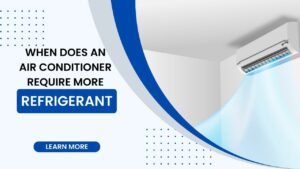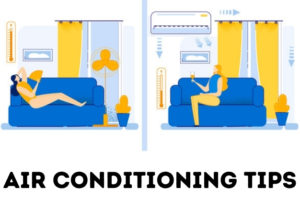Smart thermostats are worth the investment when you are looking for some serious temperature controls and features. Most homeowners know very little about modern thermostats and their exciting features. Whenever you set the thermostat of your HVAC system, the system runs to reach the specified temperature.
After the target area reaches the temperature, the cooling or heating function halts. What if the temperature starts climbing up or falling down after the system stops? Here comes the functionality of the thermostat and its fan’s Auto and On features. If you have kept the thermostat fan on Auto, then the fan will adjust to the functionality of the HVAC system.
Whereas the On feature keeps the fan turned on even when the heating or cooling cycle has stopped. Which is the ideal thermostat feature for your HVAC system? Not to mention, both configurations have their own sets of pros and cons.
Let’s check out whether you should choose the ‘Auto’ or ‘On’ configuration of the thermostat.
What’s Auto Function on a Thermostat?
Generally, you can control the temperature and fan activities with the installed thermostat for the HVAC system. Most thermostats offer two major functions for the fan. The Auto setting keeps the fan active when your HVAC system runs a cooling or heating cycle.
Otherwise, the fan will stay turned off. The thermostat will instruct the fan to turn off as soon as the surrounding temperature reaches the desired value. Additionally, the fan will start spinning when the next cooling or heating cycle initiates.
Advantages of Keeping the Thermostat Fan to its Auto Mode
It’s more like a personal choice whether you want to set the thermostat fan to Auto mode or not.
However, several perks are there with the thermostat fan set to the Auto mode, such as:
- The Auto mode ensures that the fan will run only when it’s necessary, or the heating/cooling cycle is on. Rather, the fan will remain shut. Therefore, the Auto option is a more energy-efficient approach.
- During summer, your home gets improved dehumidification. Moisture captured from the indoor air can be drained outside easily when the fan is set to Auto. If the fan keeps running all day, then the moisture or condensed vapour won’t drip automatically. And, it can’t be drained outside.
- The fan will push the moisture inside, and the HVAC unit has to work harder. The AC unit especially has to push more to get rid of the excess moisture from the surrounding air.
- A running fan will keep blowing out the air more often compared to a fan set to Auto mode. The filters will get dirtier if the fan keeps running all the time. It happens because the air filters will purify the air every time the fan is running.
- Chances are there that the air filters will be more clogged. Instead, a thermostat fan on its Auto mode will help to keep air filters comparatively cleaner.
All these perks will help you to save energy. Additionally, you can save your HVAC system from being excessively clogged. Therefore, you can save up on electricity bills.
Otherwise, we all know how a dirty filter forces the blower to work harder and consume more energy.
Are there any Disadvantages to the Thermostat Fan’s Auto Mode?
Yes, you might notice uneven cooling or heating when you have set the thermostat fan to Auto mode. Since the fan is not running after your home reaches the optimal temperature, you might find it discomforting. The fan simply stops passing the air throughout your home.
On the other hand, the blower fan might get damaged because of turning on and off more frequently than constantly running. Such repeated starts and stops are enough to make the blower fan wear out within a short period.
What’s about the Thermostat Fan’s On Function?
The thermostat fan always keeps running, irrespective of whether the cooling or heating cycle is active or not. The HVAC system might power off the heating or cooling cycle, but it maintains the fan running. This makes sure that the fan can circulate air constantly. And, you can experience more uniform cooling and heating.
What are the Perks of the Thermostat Fan’s On Function?
The first thing is that you can experience even distribution of cool or warm air throughout your home. Hence, you won’t notice freezing or melting zones in a definite region of your home.
In addition, the fan need not start and stop so frequently. The fan keeps running, and it won’t damage the components in the near future. Moreover, you can receive fresh and breathable air if you add a UV light or filtration system to your HVAC equipment.
Cons of the Thermostat Fan’s On Function
Needless to say, your HVAC system will pull more energy to run the fan all around the clock. In return, you will encounter a rapid increase in your electricity bills if you set the thermostat to the On configuration. Therefore, the On setting of the Thermostat is not a money-saving option.
Besides this, you might have to replace the furnace filter more often than required with the On setting. Since the fan is blowing air in and out of the furnace constantly, the filter will turn dirty soon. And, you have to replace it without a second thought.
Additionally, the all-time active fan keeps bringing warm air during summer. This means that the ducts will turn warmer, and the AC has to work harder. This will increase energy consumption.
Similarly, the fan will blow in cooler air from outdoors to the ducts. As a result, the heating unit has to work more. Overall, the HVAC system has to consume more energy to combat excessive heat and cooling with the fan ‘On’, respectively.
Auto or On: What Should be Your Choice?
If you want to save more energy, then Auto-configuration wins the battle. Additionally, you don’t have to replace the furnace filters more recurrently. Your HVAC system doesn’t have to take more pressure than required with the dedicated Auto function of the thermostat.
However, your property might lack an even cooling or heating distribution with the Auto option. This will be a problem if you own a multi-storied building or villa. So, you should consider turning the thermostat to the On position to evenly distribute the cool or warm air inside your home.
Moreover, you can switch between the Auto and On options as required. For example, you can keep the thermostat on Auto when you have to find a balance between energy consumption and unnecessary replacements. Make sure that you turn off the On function when you feel like the ducts have a leak or it’s excessively humid.
Is There Any Other Thermostat Setting?
Switching between the Auto and On settings repeatedly can be frustrating. You can replace your old thermostat with a smart one for more handy and accurate results. These thermostats allow you to change fan speed according to heating or cooling cycles.
Apart from these settings, you can set options for your programmable thermostat. For example, you can set it to at-home, away, or sleeping options. And, the thermostat will catch up with your temperature preference and adjustments.
The best part, you need not manually set the thermostat every time you have to leave. The thermostat does everything automatically as data is provided.




